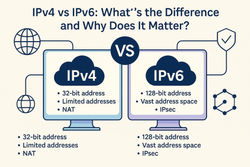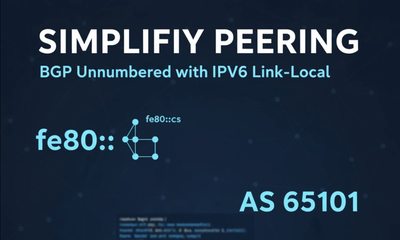On this page
The Internet, in its magnificent global sprawl, is fundamentally a network of networks. Unlike the neatly contained domains governed by Interior Gateway Protocols (IGPs) such as OSPF or EIGRP, the vast inter-domain landscape requires a routing protocol designed for entirely different challenges. Enter the Border Gateway Protocol (BGP)—the undisputed routing backbone of the Internet, meticulously steering packets across hundreds of thousands of disparate Autonomous Systems (ASes). This foundational series will delve into the intricacies of BGP, beginning with an exploration of its architectural underpinnings and the inherent strengths that have cemented its indispensable role.
BGP’s Foundational Strengths: Engineered for Control, Policy, and Scale
BGP's initial design philosophy transcended mere reachability. It was meticulously architected to provide granular control, enforce complex routing policies, and scale to the unprecedented dimensions of a rapidly expanding global network. Let's dissect the core attributes that underscore BGP's enduring dominance in inter-domain routing.
1. Reliability: The TCP Foundation and Session Management
Unlike its UDP-dependent IGP counterparts (which often rely on their own transport reliability mechanisms), BGP leverages the Transmission Control Protocol (TCP) for its transport mechanism, specifically over well-known port 179. This design choice is not coincidental; it imbues BGP with a critical layer of inherent reliability, inheriting TCP's robust suite of features while simultaneously introducing unique BGP-specific session management:
- Guaranteed Delivery and Ordered Transmission: BGP offloads the complexities of retransmission, sequencing, and acknowledgment to TCP. This foundational reliability ensures that BGP
UPDATEmessages, containing crucial routing information (network prefixes and their associated path attributes), are delivered reliably and in order across potentially lossy inter-domain links. The integrity and consistency of the routing table are paramount for global internet stability, and TCP provides the necessary guarantees against packet loss, duplication, and reordering. - Session Integrity and Keepalives (Hold Timer): Once a BGP session (peering relationship) is established via the TCP three-way handshake and subsequent BGP
OPENmessages, BGP employs lightweightKEEPALIVEmessages to continuously monitor the health of the TCP session and, by extension, the liveness of the BGP peer. TheseKEEPALIVEmessages are typically sent every one-third of theHold Timervalue. The defaultHold Timeris often 180 seconds, meaningKEEPALIVEs are sent every 60 seconds. If a BGP speaker does not receive any BGP message (anUPDATE,KEEPALIVE, orNOTIFICATION) from its peer within the negotiatedHold Timerinterval, the BGP session is deemed down. This triggers an immediate tearing down of the TCP session, withdrawal of all prefixes learned from that peer, and a subsequent recalculation of best paths, ensuring prompt adaptation to peer failures and preventing the use of stale routing information.







